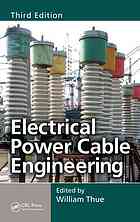

Most ebook files are in PDF format, so you can easily read them using various software such as Foxit Reader or directly on the Google Chrome browser.
Some ebook files are released by publishers in other formats such as .awz, .mobi, .epub, .fb2, etc. You may need to install specific software to read these formats on mobile/PC, such as Calibre.
Please read the tutorial at this link: https://ebookbell.com/faq
We offer FREE conversion to the popular formats you request; however, this may take some time. Therefore, right after payment, please email us, and we will try to provide the service as quickly as possible.
For some exceptional file formats or broken links (if any), please refrain from opening any disputes. Instead, email us first, and we will try to assist within a maximum of 6 hours.
EbookBell Team

4.7
56 reviews"Preface The authors would like to acknowledge the almost 40 years of dedicated work by Professor Willis F. Long of the Department of Engineering Professional Development at the University of Wisconsin--Madison that has made this book possible. It was because of his efforts that the first course of a series, Power Cable Engineering Clinic, was presented in the early 1970s where Dr. Eugene Greenfield gave all the lectures for 8 hours a day during the 5 days of the course. He later added a few lecturers to share the work load. The course was reorganized in 1999 and called "How to Design, Install, Operate, and Maintain Reliable Power Cable Systems" and divided into two sessions: "Understanding Power Cable Characteristics and Applications" and "Assessing and Extending the Life of Shielded Power Cable Systems." The present course is known as "Understanding Power Cable Characteristics and Applications." Over the years, numerous lecturers have produced copious class notes that form the basis for much of the material that has been rearranged into a book format. The contributors hope that their team effort will be a useful addition to the library of all dedicated cable engineers. The dynamics of the cable industry produces many new materials, products, and concepts, which are incorporated into new editions. New chapters have been prepared (Low Voltage Cables and Thermal Resistivity of Soils) while others have been updated and expanded (Conductors now includes metric designations and Acronyms have been added to the Glossary) for this Third Edition. Emphasis of this book remains on low and medium voltages since they comprise the majority of cables in service throughout the world"--
"Preface The authors would like to acknowledge the almost 40 years of dedicated work by Professor Willis F. Long of the Department of Engineering Professional Development at the University of Wisconsin--Madison that has made this book possible. It was because of his efforts that the first course of a series, Power Cable Engineering Clinic, was presented in the early 1970s where Dr. Eugene Greenfield gave all the lectures for 8 hours a day during the 5 days of the course. He later added a few lecturers to share the work load. The course was reorganized in 1999 and called "How to Design, Install, Operate, and Maintain Reliable Power Cable Systems" and divided into two sessions: "Understanding Power Cable Characteristics and Applications" and "Assessing and Extending the Life of Shielded Power Cable Systems." The present course is known as "Understanding Power Cable Characteristics and Applications." Over the years, numerous lecturers have produced copious class notes that form the basis for much of the material that has been rearranged into a book format. The contributors hope that their team effort will be a useful addition to the library of all dedicated cable engineers. The dynamics of the cable industry produces many new materials, products, and concepts, which are incorporated into new editions. New chapters have been prepared (Low Voltage Cables and Thermal Resistivity of Soils) while others have been updated and expanded (Conductors now includes metric designations and Acronyms have been added to the Glossary) for this Third Edition. Emphasis of this book remains on low and medium voltages since they comprise the majority of cables in service throughout the world"